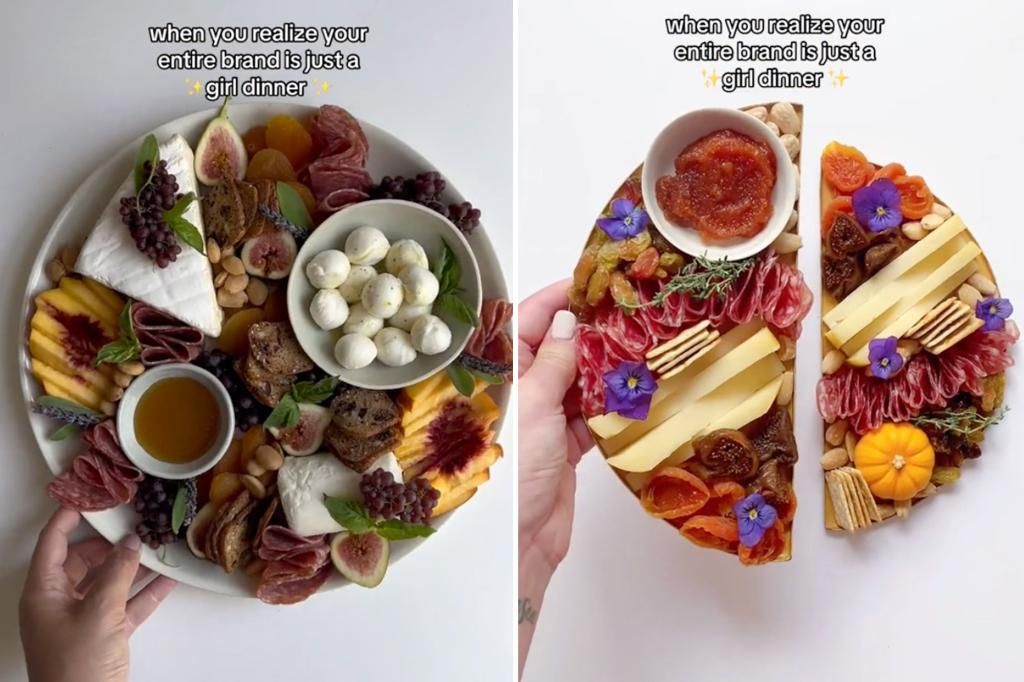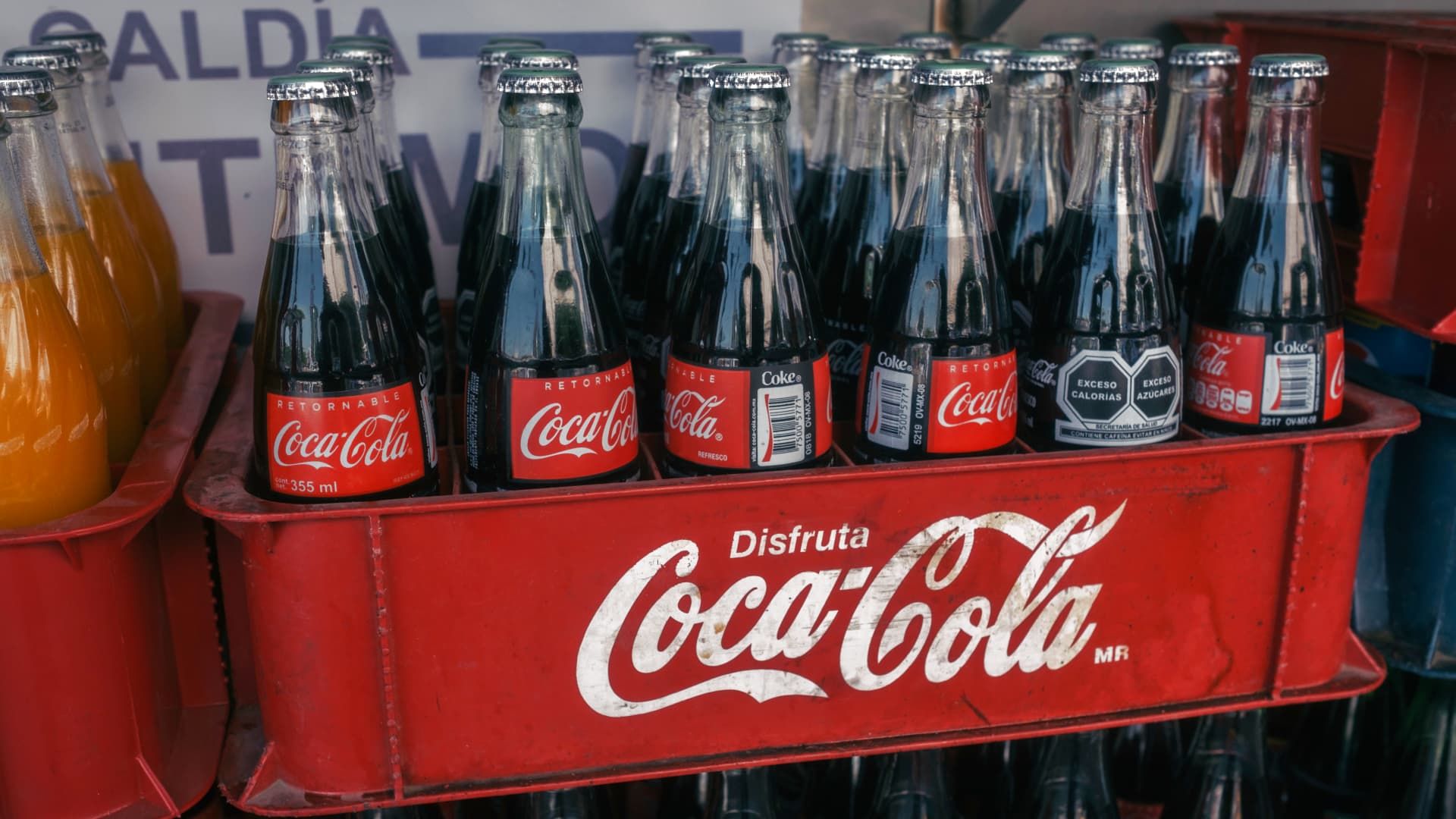Don't fall prey to fake 'girl dinner' outrage: food experts
Please romaine calm.
#GirlDinner has enticed over 247 million views on TikTok, as young women share what they pulled together to consume while watching their favorite show on the couch.
Critics are sounding the alarm on the “disturbing new trend,” claiming that the videos showcase too-small portions of food, even though “girl dinners” are often an aesthetic arrangement of cheeses, cold cuts, crackers and fruits (i.e. “snack plates”) or a random assortment of leftovers from the depths of the fridge.
“Any time people are posting pictures of food, [it] has the potential to cause comparison among individuals,” Kelsey Rose, a clinical assistant professor in the Department of Nutrition and Food Sciences at the University of Vermont, told The Post on Friday.
She went on to clarify that while “nutrition is individualized, and a balanced meal is super-important, having a one-off night — where you have a ‘girl dinner’ (as long as you’re full and satisfied) — isn’t a case where you’re having a disordered relationship with the food that you’re eating.”
The #Girldinner tag has amassed over 247 million views on TikTok. @karamarkert/TikTok
Nevertheless, the trend follows criticism that TikTok promotes “toxic” diet culture and “glorifies” weight loss, and the alarming rise of adolescent eating disorders since the COVID-19 pandemic.
However, many of the videos that are causing concern may be jokes that might have missed the mark for some — like a TikTok from last week that shows a woman walking out of a kitchen with a glass of ice for “girl dinner.”
Others have cracked that Lunchables or Easy-Bake Oven treats are the original inspiration for the trend.
The trend has been ridiculed online, as some joke that Lunchables or Easy-Bake Oven treats are the original “girl dinner.” @charhrobertson
“Girl dinners” are actually nothing new.
Like many other online movements, they are simply an age-old occurrence that Gen Z has rebranded into a hashtag.
Olivia Maher, the self-proclaimed creator of the “girl dinner” concept, explained in a TikTok posted in May that “in medieval times peasants had to eat nothing but bread and cheese,” arguing that the scraps are actually what she would consider her “ideal meal.”
Cultures across the world have long adopted grazing boards at mealtime.
Think tapas in Spain, charcuterie boards in France, bento boxes in Japan and noshes in Jewish households.
Even celebrity foodies, such as Alison Roman, have eschewed the phrase “girl dinner” while still promoting the concept.
“This video you’re about to watch is in no way inspired by girl dinners,” Roman noted in a recent YouTube video.
“This is not that; this is our version of apéro hour,” she said, referencing a French happy hour tradition that consists of “nearly anything you like,” like “a dip, a nut, an olive, a fish, a cheese and vegetables” — so, essentially a “girl dinner.”
Tapas in Spain, charcuterie boards in France, bento boxes in Japan and noshes in Jewish households are some examples of snacking from around the world.
As they tend to do, this viral trend has sparked several spoofs and spinoffs, including “husband meals” (what spouses scarf when wives are away) and “boy dinners.”
Aspiring musician Arkane Skye went viral starting the TikTok trend #BoyDinner — which has over 52 million views — with a catchy song and satirical video showing himself biting into a slice of leftover Domino’s pizza he found under the covers in his disturbingly messy room.
He told BuzzFeed that the videos are a funny “generalization of boys not only making unhealthy food choices but also being unclean and lazy.”
Some warn that the small servings may encourage eating disorders, but others insist these snacking dinners can be healthy if they are nonrestrictive. TikTok
As for “girl dinners,” Rose told The Post that the trend could be interpreted as “a form of self-care in the way that someone is feeding themselves in a way they enjoy with satisfying food — without having to make a full meal or care [for] someone else.”
If you or someone you love is struggling with an eating disorder, you can get help. Call the National Eating Disorder Association helpline at (800) 931-2237 or visit NationalEatingDisorders.org.
Source: New York Post


